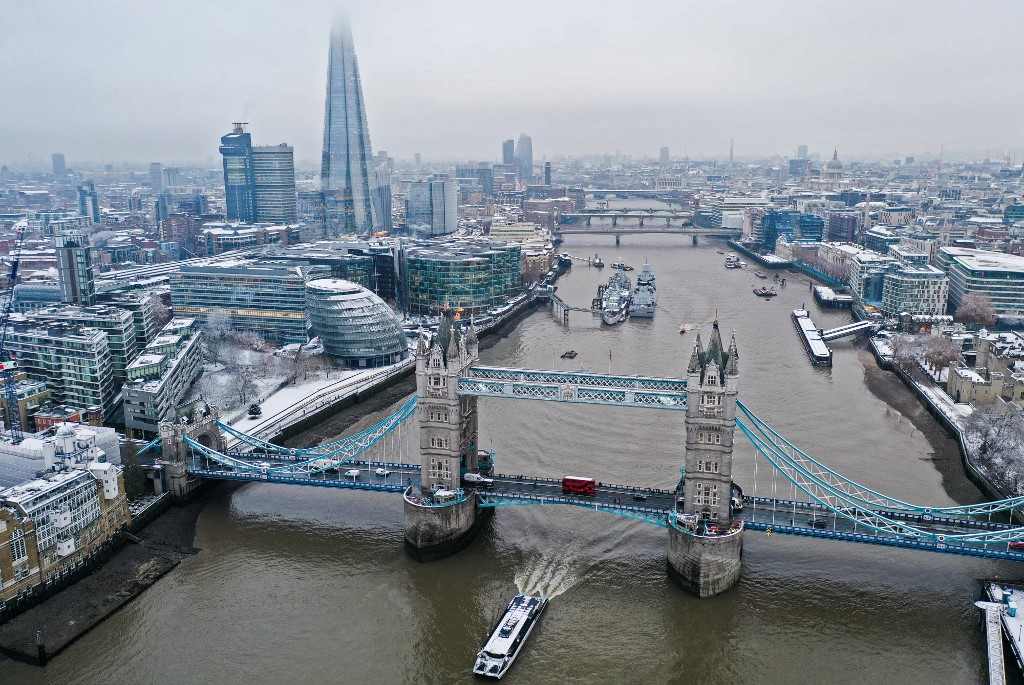A battle is brewing over plans to turn so-called spy tunnels beneath central London into “one of the world’s most unique cultural experiences”, pitting a global financier against local residents.
Australian-born private equity entrepreneur Angus Murray has submitted the proposal to transform the history-rich yet little-known Kingsway Exchange Tunnels — which stretch for over a mile (1.6 kilometers) — into a major tourist attraction.
If approved, it would host immersive displays showcasing its distinctive heritage as a World War II bomb shelter and then the home of the top-secret Special Operations Executive.
A branch of the MI6 foreign intelligence service, it is considered the inspiration for “Q Branch” in Ian Fleming’s James Bond franchise.
The reimagined venue, which will boast other exhibits as well as Britain’s deepest licensed bar, is aiming to welcome up to two million annual visitors from 2027.
“We envisage The London Tunnels achieving the same iconic status… as the London Eye,” Murray said last week as he announced plans to list the venture on the London Stock Exchange.
The company plans to invest £220 million ($280 million).
But in recent weeks concerned residents in the monied corner of Holborn have been digging in, complaining about developers and then visitors accessing the site from their quiet streets.
Local opponents include a British lawmaker and landlords of a psychotherapy and counseling venue.
“I object… on account of such a dramatic change of character to a quiet residential area,” one local, James Keay, told Camden Council and the City of London local authorities, which will rule on the planning application.
– ‘Vision’ –
The complex beneath Holborn was built as an air-raid shelter during the early 1940s Blitz bombings, before MI6 moved in later during the war.
The government enlarged the site early in the Cold War to host a secure and secret long-distance telephone exchange, shrouding it in official secrecy for decades.
The tunnels operated the first transatlantic telephone cable, called TAT-1, and was a key cog in the so-called hotline between Moscow and Washington that emerged in the wake of the 1962 Cuban Missile Crisis
Much of the original equipment from this time will be retained, according to the developers.
The site, spread over 8,000 square meters (86,000 square feet) and around 30 meters (100 feet) below ground, accommodated up to 200 staff and featured a bar, a restaurant with mock windows, and a recreational room with snooker tables.
But by the late 1980s telecommunications technology had advanced and the complex was decommissioned. It was put up for sale in 2008.
Murray, a former Macquarie Group executive who founded his own hedge fund, eventually bought it.
“The vision is to transform the tunnels into one of the world’s most unique cultural experiences,” his newly formed company, The London Tunnels, said as it unveiled the plans last September.
“The project aims to collaborate with major technological and entertainment companies, as well as like-minded partners, museums and universities,” it told potential investors last week.
– ‘Impact’ –
The firm plans to spend £140 million on “restoring, preserving and fitting out the site”.
It has earmarked a further £80 million for installations, including high-resolution curved screens, interactive structures, “scent-emitting technology” and hundreds of acoustic speakers.
The tunnels, nearly eight meters wide, will offer a “multi-sensory, digital experience across the world of the arts, nature and sciences”.
But John Krebs, a member of the House of Lords upper chamber of parliament, who has a flat there, said residents were concerned about crowds and traffic on “a quiet, narrow side road”.
Access for delivery and service vehicles, and whether the visitor center lobby could cope with the anticipated 500 visitors per hour, are other worries.
“In short the logistics of the proposal and its impact on the street seem to be ill-thought out,” Krebs told AFP.
In a dozen objecting comments lodged so far, locals branded the plans “completely unacceptable”, “prohibitively detrimental” to the neighborhood and “a flagrant travesty” of planning rules.
“It fails to convince the area would benefit from such a tourist attraction, or that there is a demand for such a historical experience, or that another pub is needed to service a declining drinking culture,” one resident, Walter Scott, wrote.
The London Tunnels, which held months of public consultations last year, appears undeterred, claiming in its stock exchange listing announcement to have already raised £10 million from investors.
It is seeking another £30 million from new shareholders, inviting them to tour the site.
The stock market move “offers both UK and international investors a chance to support, while owning part of, this unique irreplaceable heritage and cultural attraction,” Murray told them. (Joe JACKSON)
jj/phz/js
© Agence France-Presse
